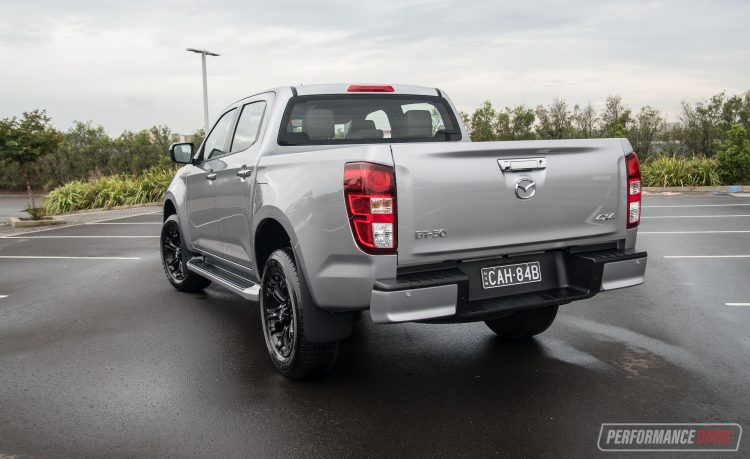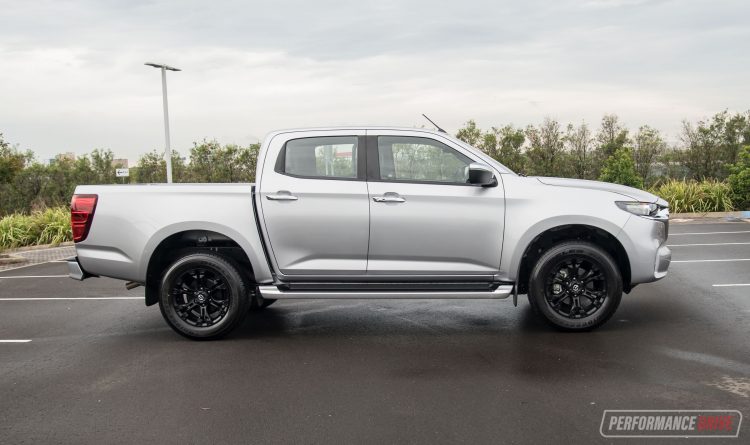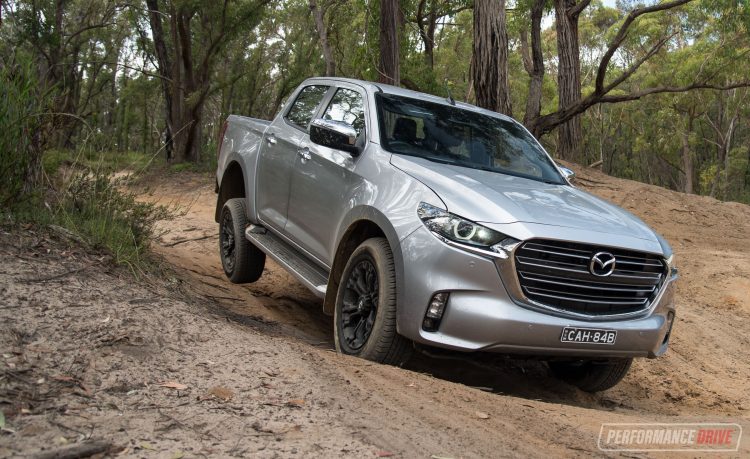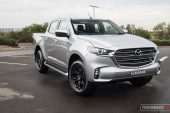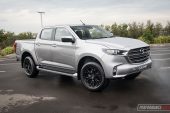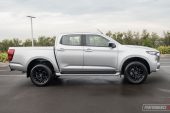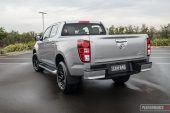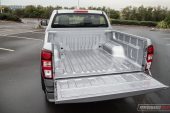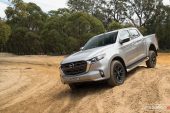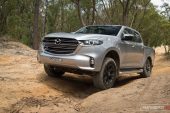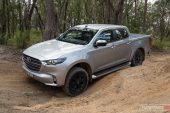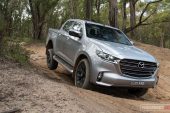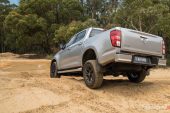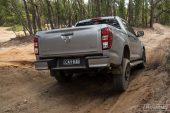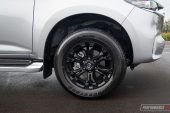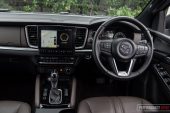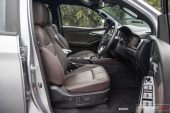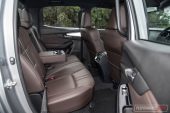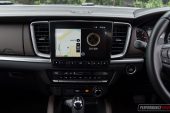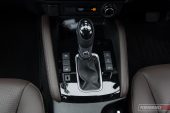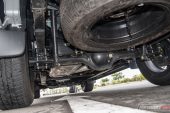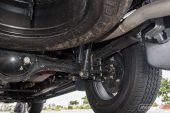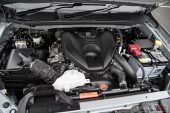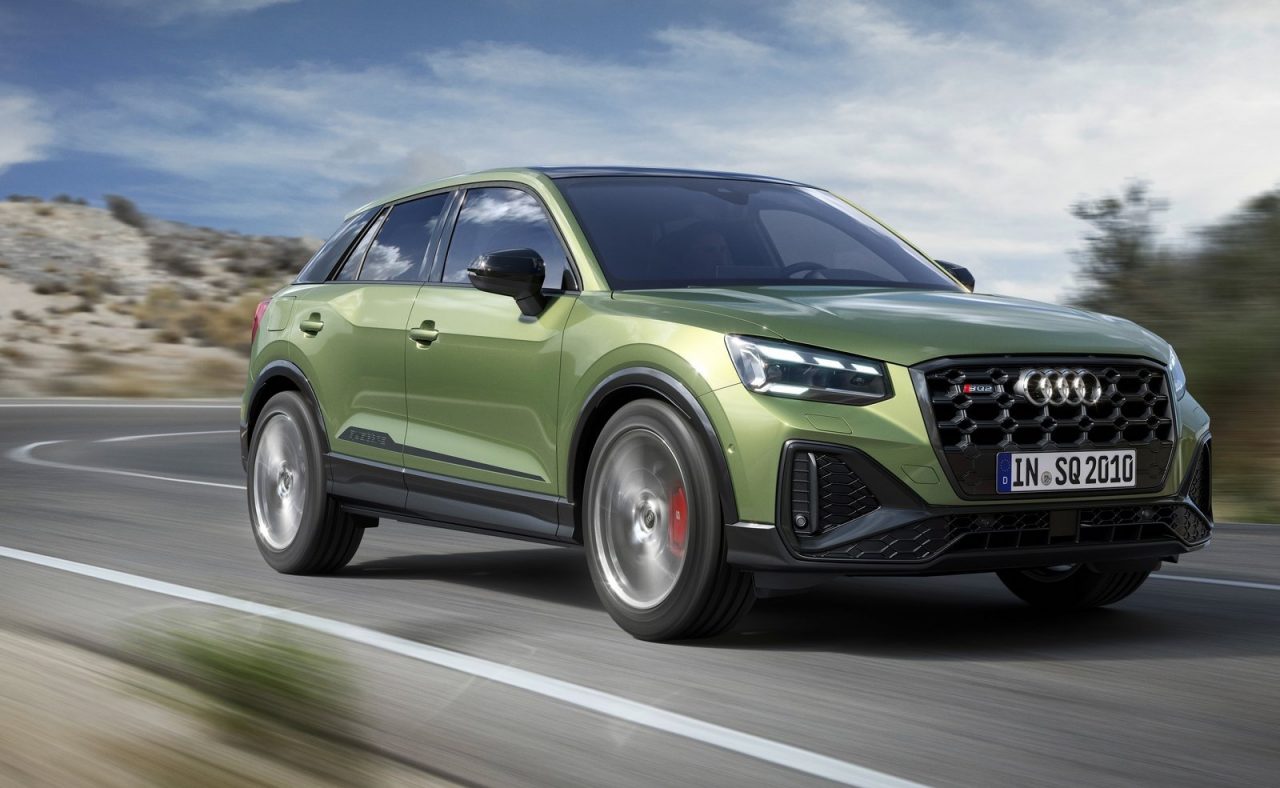What’s the point of buying a 2021 Mazda BT-50 if it’s entirely based on the new Isuzu D-Max – wouldn’t you just buy the D-Max? Good question. We better take a closer look and find an answer.
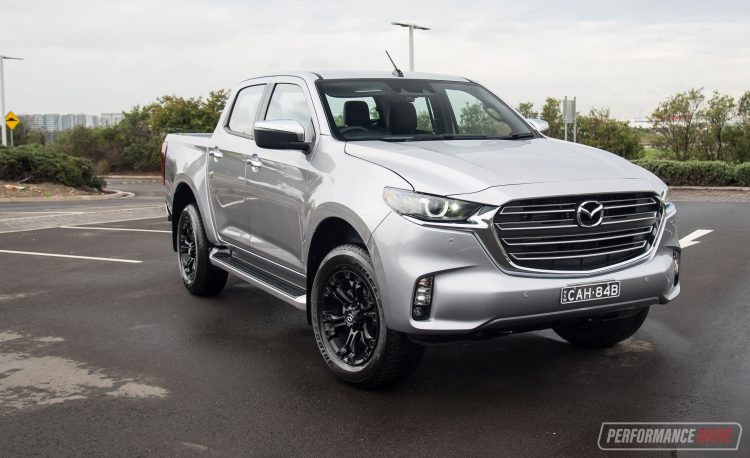
Firstly, if you didn’t already know, the old/outgoing BT-50 was based on the current Ford Ranger, using the chassis, powertrain, and some other bits and pieces from Ford. In other words, this badge engineering stuff isn’t anything new. That partnership has been cut, and Ford is teaming up with VW for their next-gen utes.
For the new BT-50 it seems like more of Isuzu is involved than Ford was in the old model. Plenty of evidence of Isuzu is seen in the cabin, including an identical touch-screen, instrument cluster and gauges, steering wheel (aside from the centre cap), and the climate control switchgear. Before, much of that was Mazda-exclusive. We’re saying this all like it’s a bad thing but in reality the new D-Max is a very good rig, so none of it really matters. But it might be interesting to know.
On pricing, the 2021 BT-50 is a bit cheaper. So there’s a decent reason right there. The top-spec GT auto dual-cab, like the Ingot Silver example featured here, starts from $59,990. That’s $2910 less than the top D-Max X-Terrain, which starts from $62,900. Although, the X-Terrain is a bit of an accessories pack model that comes with added features, such as a roller-shutter and sports bar for the tray area.
The Mazda is covered by a five-year/unlimited kilometre warranty whereas the D-Max gets a six-year setup but only for 150,000km. Hmm. They’ve really thought about all of this haven’t they? Because they are like for like so far, making your (and our) job harder.
2021 Mazda BT-50 GT – THE SPECS
[column width=”47%” padding=”6%”]Engine: 3.0-litre turbo-diesel four-cylinder
Output: 140kW@3600rpm / 450Nm@1600-3600rpm
Transmission: Six-speed auto
Drive type: Part-time RWD/4WD, rear differential lock
Wheels: F & R: 18×7.5, 265/60
ANCAP: Five stars
Kerb weight: 2035kg
Power-to-weight: 14.53:1 (kg:kW)
Official fuel economy: 8.0L/100km
Economy during test: 8.9L/100km[/column] [column width=”47%” padding=”0″]Fuel capacity/Type: 76L/Diesel
Power efficiency: 17.5kW:L/100km
0-60km/h: 4.02 seconds*
0-100km/h: 9.55 seconds*
60-110km/h: 7.31 seconds*
1/4 mile: 16.85 seconds at 134.0km/h*
Max acceleration: 0.664g
100-0km/h braking: 3.35 seconds at 39.58 metres*
Max deceleration: -1.102g
Decibel at idle: 48*
Peak decibel at 60-100km/h: 77*
Priced from: $59,990[/column][end_columns]
* Figures as tested by PerformanceDrive on the day. Factory claims may be different
2021 Mazda BT-50 GT – THE PACKAGE
We like what Mazda has done with the interior, especially on the GT. An elegant brown leather upholstery comes as standard. Ordinarily, you might think, yuck. But it is really pleasant when you’re inside. It’s an elegant and premium-like environment. The brown extends into just enough places too, so the high-traffic areas miss out for durability reasons. That means you won’t be wiping off marks and smears every second week.
The cabin is very well presented, with all of the controls at easy reach and clearly marked out. A smorgasbord of toggle switches make up the climate control on the centre of the dash, and they feel really nice to press, and pretty much everything else is packed into the Isuzu-based 9.0-inch touch-screen. This, unfortunately, is where things go a tad pear-shaped.
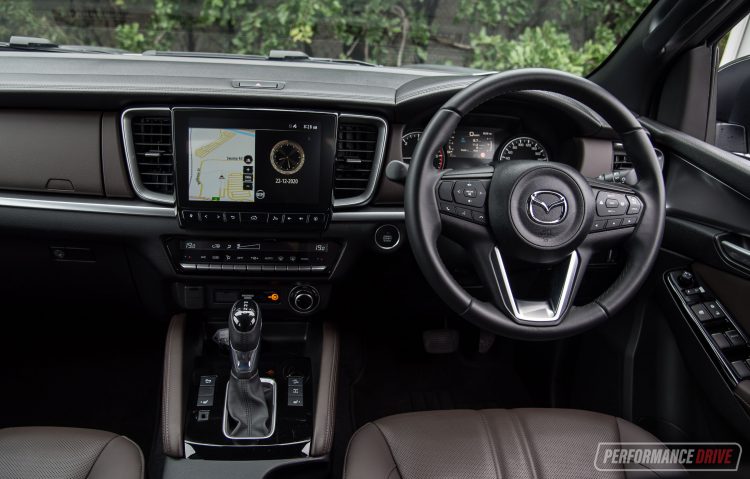
This screen is a huge step forward for Isuzu, as the old D-Max screen was extremely basic. It had the graphics of a calculator and operated with decades-old functionality. Now with this new screen it does provide things like Android Auto and Apple CarPlay, colourful graphics, and some in-built apps.
But it is still behind the market standards in our opinion. You can’t browse radio stations while you’re driving, for example, because the car deems that too dangerous. The menus are very crude and clunky as well. And judging by our experience with this test vehicle, the screen is prone to crashing and rebooting itself, for no reason.
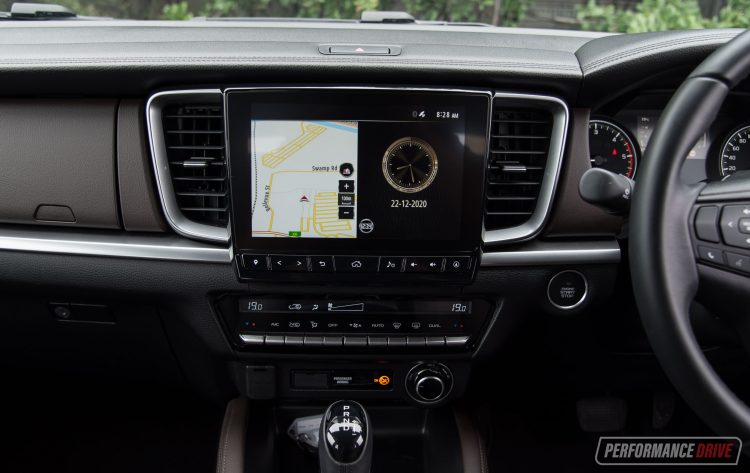
Without exaggeration, the screen on this test car crashed over 20 times during our two weeks with the car – essentially on every driving session we had. Some of those times were in the middle of a Bluetooth phone call and it just cut it off right in the middle and reset. Obviously this could be an isolated glitch with this particular test car. What we’re mainly upset about is the fact that Mazda can do better. Why not install the excellent MZD Connect screen and hand controller? Subaru and Toyota do different screens for the BRZ/86 duo, and the BMW Z4 and Supra have different setups as well. We very much doubt it was a case of Mazda seeing what Isuzu has done and thinking, ‘That’ll do, let’s leave it. It’s better than ours.’
The rest of the cabin, including the layout for storage and cup holders, the availability of charging ports front and rear, and rear climate vents are all superb initiatives, placing this cabin near the very top of the class in this area. For that reason, the BT-50 is an ideal all-round family car and work car because it is so practical and comfortable, and has a sense of warmness about the cabin, yet it’s also one that can live up to worksite duties very well thanks to hard-wearing materials in the important areas.
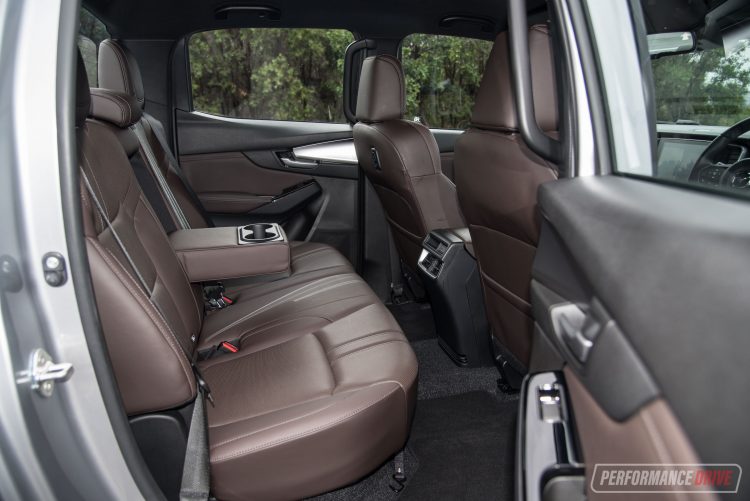
As for the exterior, personally, I think it is the best-looking ute out there. A lot of the other contenders in this space go for macho themes and all look quite similar. Whereas this bucks that trend and instead incorporates actual design and attention to detail. The front end features Mazda’s sophisticated grille, smart-looking LED headlights, and nice curves around the front corners. And, cleverly, the design hasn’t interfered with the approach angle. More on that later.
Mazda offers a range of seamlessly integrated accessories as well, from bull bars, chunkier side steps, sports bars, canopies, snorkels, and even unique wheels such as the sporty black-painted 18-inch items showcased here. There’s also different body styles and cabin layouts, including single, space, and dual cab.
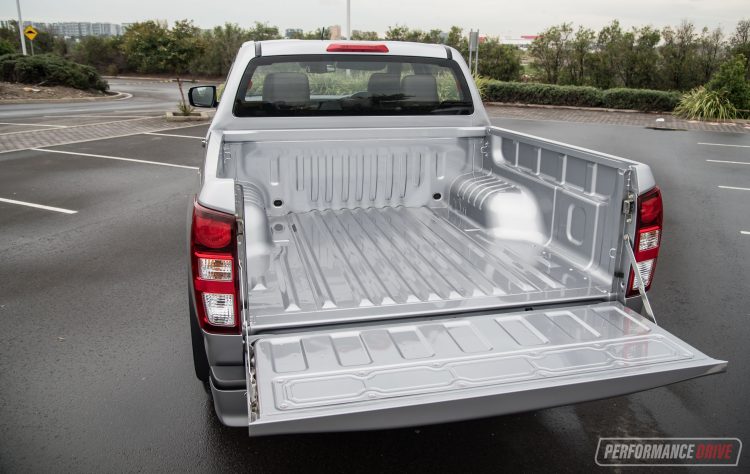
In terms of safety tech, everything is included. Autonomous emergency braking, lane support and blind-spot warning and all of that is standard, which really is fantastic to see. But the way these operate can be quite frustrating. For example, the lane support system is overly-sensitive. If you don’t drive robotically parallel within the lane markings, the warnings start going off and the automated steering yanks you back in line. Even though you were in line. The autonomous emergency braking is also very sensitive in its default mode.
And to turn it all off is a downright pain in the arse. You have to dive deep into the very fiddly menu within the instrument cluster, and you have limited time before the screen automatically switches back to the main menu. And you can only do this when the vehicle is stationary. It’s like a frigging game show puzzle.
We tend to excuse Isuzu for this – only just – because it hasn’t been involved in active vehicle safety at this level before, and thus doesn’t have much experience or data to bounce from. Mazda, on the other hand, provides some of the best safety systems available on the market. We know it can do better than this.
2021 Mazda BT-50 GT – THE DRIVE
Is it disappointing that power and torque have reduced from 147kW and 470Nm with the previous Ford 3.2 five-cylinder, to 140kW and 450Nm? No, not at all. The new Isuzu 3.0-litre turbo-diesel four-cylinder, which is actually a major overhaul compared with the old 4JJ unit, is now really refined (for this class) and offers good performance and economy.
Peak torque is available from as low as 1600rpm, or just off idle, and held until 2600rpm. Peak power then comes in at 3600rpm. The in-gear pull is strong, and off the mark it will squeal the tyres if you’re angsty. Overtaking performance is also decent. We think an eight-speed auto might be better-suited at pulling through from varied speeds, but there is enough torque here to surge in higher gears and get by.
Across our usual acceleration tests we saw a best 0-100km/h time of 9.55 seconds. That’s a smidge quicker than our best effort in the D-Max (9.75). We think this might be due to weight differences, with this GT-spec offering a kerb weight of 2035kg against the D-Max LS-U‘s 2045kg. Either way, that’s a quick time for this class according to our tests.
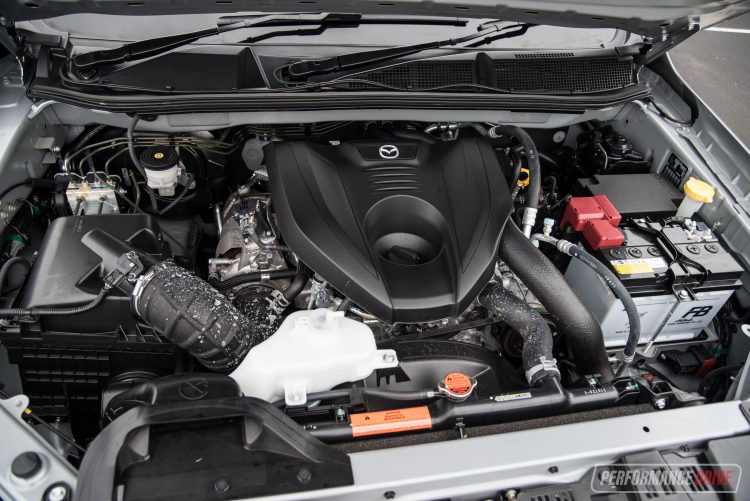
Fuel consumption is rated at 8.0L/100km, which is a massive improvement over the old Ford 3.2 unit which gulped 10L/100km on the official combined cycle. Interestingly, we tested the old GT across 0-100km/h in 2018, when it was new, and it only managed 10.75 seconds. The emissions of the old 3.2 are 234g/km while this Isuzu unit emits 207g/km. Both pass Euro 5 standards. So, all the information is right there that completely justifies this new engine. It’s quicker and more economical.
Enough about the facts and figures, what about the drive experience? Well, to be bluntly honest, all of these modern dual-cab utes handle and behave almost exactly the same. It’s really only the Chinese newcomers that need further work in suspension development in our opinion. Body roll is very minimal and turn-in is surprisingly sharp and eager. The steering through the lovely three-spoke steering wheel is also rather nice too, with adequate levels of feedback giving you a good sense of where the tyres are placed and how they’re coping.
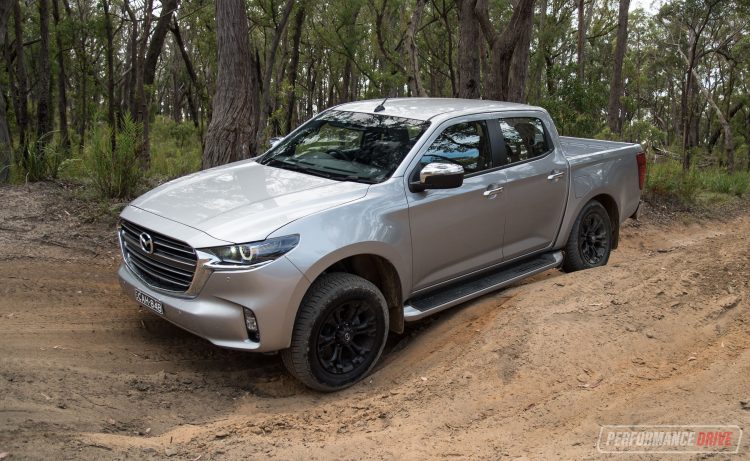
These big utes are quite long, with the BT-50 dual-cab measuring well over five metres (5280mm). You do have to mindful when parking in typical car parking spaces at the shops and so on. Aside from that, driving around the city and threading through tight streets is simple. It’s not intimidating. In fact, the opposite. You feel empowered behind the wheel, being all perched up. We guess that’s why you always see a big ute right behind you on the highway, no matter what speed you’re doing. Utes tend to provide a boost in ego and confidence.
The ride is a bit jiggly from the live rear axle with leaf springs. But it is bearable and most competitors aren’t much better. On the flip side, the payload capacity of this GT is an impressive 1065kg. All models also offer a 3500kg braked towing capacity. In GT trim the gross combination mass is 5950kg. So, take that and subtract the kerb weight and you’re left with 3915kg. Chuck a 3500kg trailer on and that leaves you with 415kg for passengers and cargo in the tray. Many of the rivals have very little leftover once a 3500kg trailer is hitched up. Legally, that is.
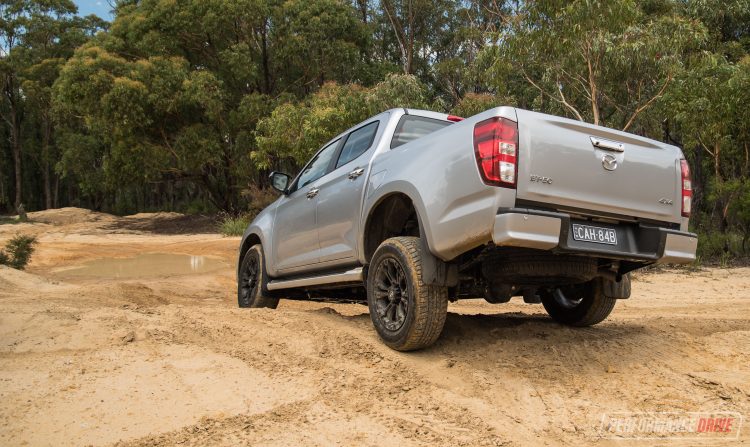
Off the bitumen, the BT-50 is as capable as any other in this class. The approach angle is increased significantly over the previous model, going from 28.2 degrees to 30.4 degrees (D-Max X-Terrain is 30.5), and the ground clearance is now 240mm, up slightly from 237mm. There’s also a standard locking rear differential for all variants from XT, XTR, to the top GT.
During our tests on a common park area we usually use, the BT-50 performed without hassle. The rear diff lock, as usual with these utes, really comes in handy when you start cocking rear wheels into the air. It stops the engine power from being spun away through one wheel. There’s also low-range for really boggy or steep stuff. As far as we’re concerned, the highway-terrain tyres are the weakest link. But honestly, you need to be in a pretty serious situation for these tyres to be the sole cause of putting a halt to your progress.
2021 Mazda BT-50 GT – THE VIDEO
2021 Mazda BT-50 GT – THE VERDICT
Firstly, that original question. Why opt for this over the D-Max? We really can’t provide a solid answer for you. But we also can’t find a reason not to go with this over the D-Max as well. We guess it all comes down to styling. We prefer the BT-50’s classier look, purely for the sake of variety compared with the D-Max’s robust and typically macho character. But that’s it.
Forgetting about the D-Max underpinnings and just looking at this as a separate vehicle, the BT-50 has clearly evolved into a much cleverer, nicer-looking, and more robust proposition. Technically, it’s also more capable thanks to favourable off-road dimensions. The 3.0L engine isn’t as powerful as the old Ford 3.2, but it is a lot more refined, smoother, quieter, quicker and more economical. All totally valid reasons for the switch in the first place.
[column width=”47%” padding=”6%”]PROS:
– Refined and quiet drive (for its class)
– Good performance from the new 3.0TD
– Elegant/premium design inside and out
– 1065kg payload/3500kg braked towing
– Rear climate vents and charging port
[/column] [column width=”47%” padding=”0″]CONS:
– Intrusive (and annoying) lane departure and forward collision warning systems
– Less power and torque than before
– Glitchy and crude touch-screen[/column][end_columns]
As always, if you’re thinking about buying a new car don’t forget to click here to speak with our car buying specialists.
